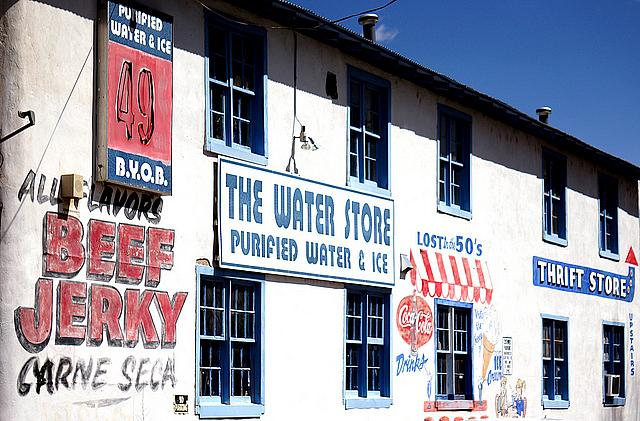When opioid overdoses won’t go away, what price do children pay?

A storefront in Española, New Mexico, where opioid overdoses have long been a problem.
America’s opioid epidemic has exploded in cities across the country in recent years. Most people are familiar with the headlines — overdoses from prescription opioids like Oxycontin or cheaper and more powerful heroin are skyrocketing, especially in suburbia. But there’s a place where these issues have been going on for generations, and where addiction and overdoses have persisted despite ongoing efforts to stop them.
The community of Española in rural northern New Mexico has had the highest rate of opioid overdoses in the country, almost consistently, for the last 40 years. It’s one of the poorest communities in the state, and its population is largely Hispanic and Native American.
This community has been struggling with an intergenerational opioid problem since the Vietnam days, when veterans returning home introduced heroin to what was then a largely agricultural area. Since then, opioid addiction has come to permeate almost every aspect of daily life in Española — family dynamics are shaped by addiction, the prisons are full, schools suffer from struggling students and high dropout rates, social services are stretched thin. A high percentage of children in the area are being raised by their grandparents, as fathers and mothers recover from addiction or succumb to it. Drug counseling and rehab centers in the area suffer from financial and institutional shortfalls, including a complete shutdown of all behavioral health clinics several years ago and a $4 million cut to the state’s behavioral health budget in the 2016 legislative session.
It’s not a story that’s gone unreported. There’s been a fair amount of media coverage of Española’s heroin problem, much of it from national publications that parachute a reporter in to write a one-off feature. But past coverage has often missed the social, cultural and political intricacies that let addiction thrive in this community, and that have kept substantive changes in health from taking place. And what I haven’t seen at all in past coverage is a focus on the children growing up amid ongoing struggles with addiction and overdose. The intersection of addiction and childhood education, environmental degradation of agricultural communities, racial health disparities and the intergenerational impacts of addiction — these are things I hope to explore as part of my 2016 National Fellowship.
In a community where addiction and overdoses are widespread and endemic, what are children facing, and how do those experiences play out throughout the course of a life? Do childhood experiences in these circumstances impact family dynamics as youth grow into parents? Moreover, what do these experiences tell us about burgeoning opioid crises elsewhere?
I’ll be embedding myself into the community for my reporting, documenting not just where the system is failing, but where opportunities for change exist. My hope is that an in-depth, ongoing investment within Española can create coverage of the issue that is in not just meaningful to policymakers and public radio listeners, but to the people in the communities I’m writing about.
[Photo by Mike Lewinski via Flickr.]
